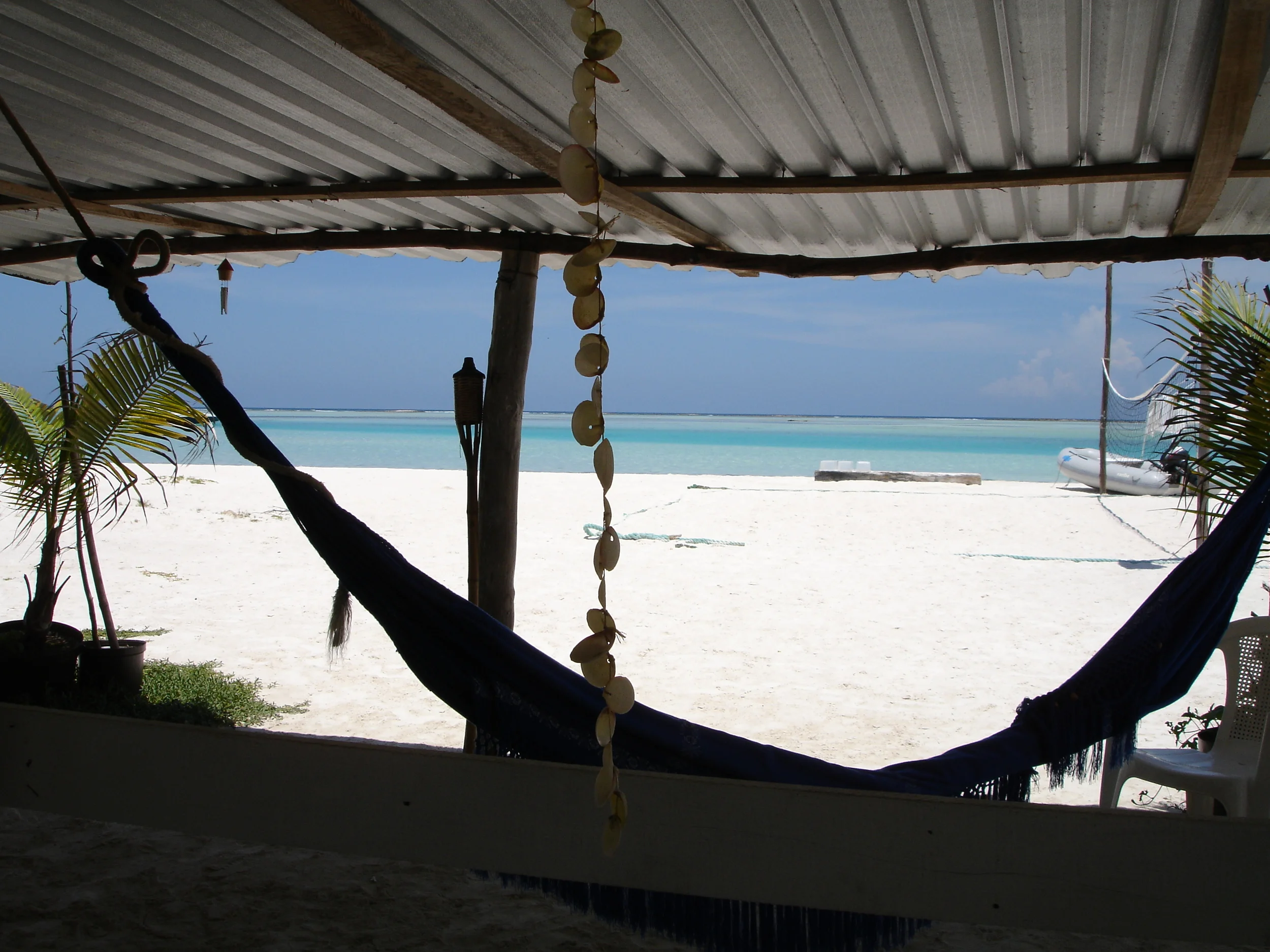November 14, 2005 - Venezuela: Margarita, Isla Tortuga and Los Roques
(Update from Cartagena, Columbia)
After we left Margarita, VZ, our computer died on the overnight passage to Isla Tortuga. We had to send it back to Dell in the USA, an enormous hassle that took nearly 3 months (thanks, Mom for helping us with that!). Consequently, we haven't been able to keep up on our web site updates! So we'll try to catch up now....
Margarita, Venezuela-
We spent longer than we anticipated in Margarita, watching the weather and shopping for a high-resolution camera to take pictures for magazine articles. The anchorage at Porlamar is near a long dinghy dock that stretches out from the shallows from a place called "Marina Juan"; it's not really a marina, but the office of the agent who checks sailors in, a small store, and a place to hang out and drink cheap Venezuelan beer. We had the good fortune to hear, one morning on the cruiser's VHF radio "net" that someone was selling their old hard-bottom dinghy. We've been wishing we could upgrade ours for a year now; as great a dinghy as it is for Maine waters, it's just totally unsuitable for this lifestyle. So we bought this old, 9-foot Caribe rigid-bottom dinghy for $130. It has some leaks that Neil, by now, has managed to fix the worst of, and we love it. It came with a dinghy cover that was falling to pieces, so, before we left I took it apart and pattered it onto the small amount of Sunbrella I had left over from other projects. I had just enough.
















Leaving Margarita with the fishing lines out!
Isla Tortuga-
When we arrived at remote Isla Tortuga, the computer had died.... we debated turning around and beating back to Margarita to try to get it fixed. I had a writing assignment that I did not want to put off, and needed the computer to download all the high-resolution pictures I was taking for the article. But we really didn't want to turn back. We tried to call Dell from Tortuga, but the one satellite phone on the island was not working: this is a very rustic place! We did find another boat with email, and were able to make contact with the states, and we decided to send the laptop from Curacao when we got there. Along the way we found many generous cruisers who let us use their laptops to download the pictures to disc. In that way we were able to spend many weeks exploring the Venezuelan islands, which has turned out to be the highlight of our trip so far.






We stayed almost a week between the long white sandy beach anchorage at Playa Caldera, and the other gorgeous beach at Cayo Herradura. There were a handful of cruising boats and a few fishermen in makeshift huts; the snorkeling was mediocre but the beaches and views were unsurpassed!




Los Roques-
We arrived in the afternoon after an uneventful passage begun at midnight at Tortuga. We'd wanted to get some daylight fishing in, but got no bites at all until we were approaching the tiny cut through the reef at the southeast corner of the large archipelago called Los Roques. Then we got a lovely mahi-mahi on the line. We were just yards from the reef entrance, in fairly blustery conditions, but Neil just headed us up to sail parallel to the reef while I reeled in and bled the fish. Then we turned in and passed though the cut and up into the gorgeous, narrow channels between reefs, all under full sail. Inside the reef, the wind was still blowing about 18 knots but suddenly the 5-to-7-foot swell was gone and it was flat calm. We could see highway-like ribbons of deep blue water snaking between the shallow light-colored reefs, some no more than 70 feet apart, and we hardened up onto a close reach and absolutely flew along. The scenery was breathtaking; it was truly exhilarating sailing!
You can see the safe deep water and the reefs to avoid very clearly!














We enjoyed Los Roques, except for the boatloads of "day-trippers" who would be ferried out to our remote anchorages from the posadas (small hotels) on the one island that had a village. El Gran Roque is a beautifully kept village with expensive, but charmingly rustic hotels and restaurants. There were lots of hip European travellers there. Los Roques is also a national park, which meant that spearfishing is illegal. Still, the snorkeling was great, the beaches were beautiful, and there were loads of anchorages to explore. We spent one night "out on the reef", anchored far from any island behind the protection of the barrier reef. We particularly enjoyed Dos Mosquiques, with its uninhabited island full of bird life. The fishing on the north side was incredible! At our last anchorage, Cayo de Agua, we found interesting "oasis" patches, where underground water fed stands of palms. Over the years native americans, and later fishermen and sailors, have dug holes into the sand for fresh water. We saw one with a bit of greenish water still in it, even though it was a very dry season when we were there.

